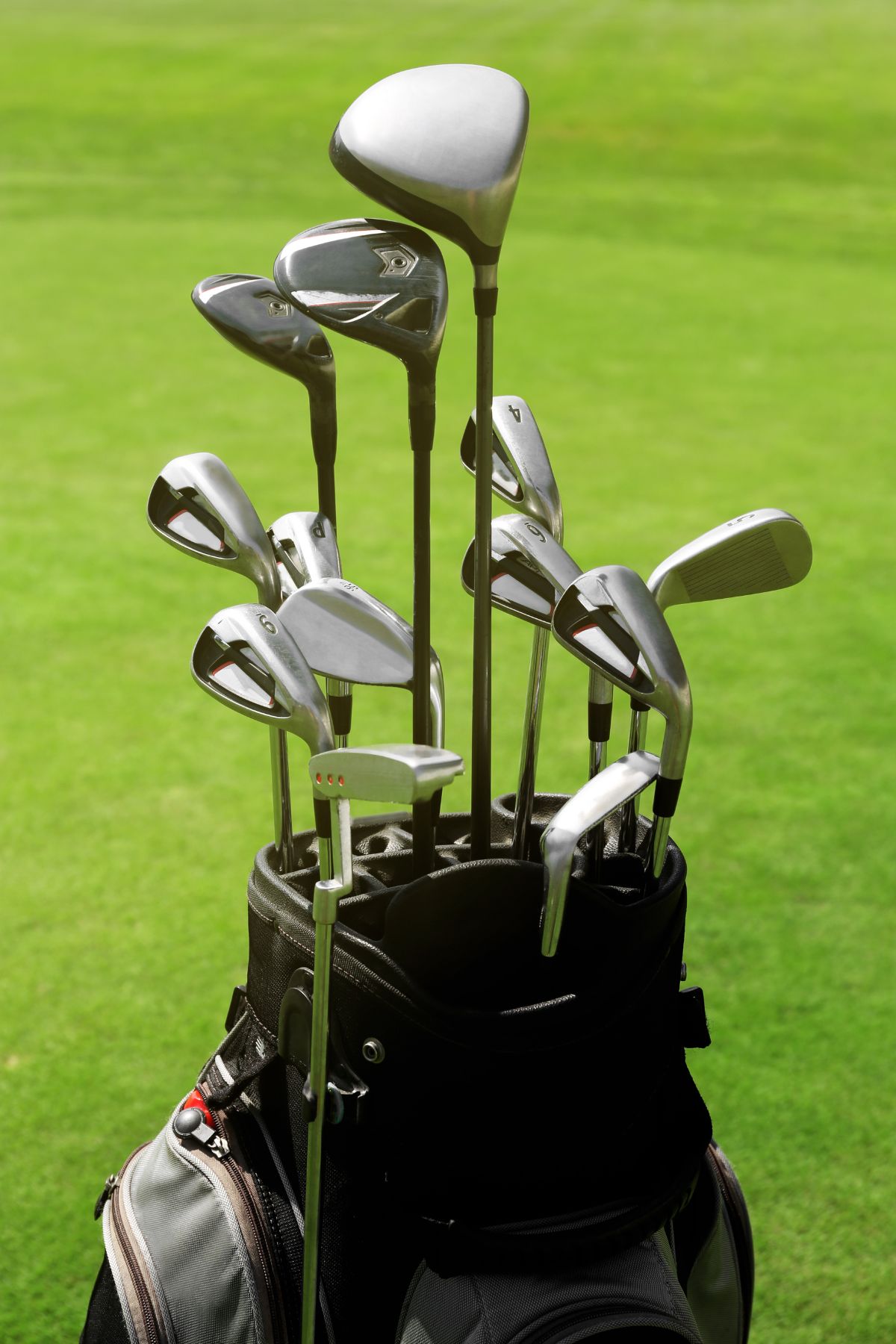A golf club length calculator is one of the most important tools a golfer can use to improve consistency, accuracy, and overall performance.
Golf Club Length Calculator
Based on height, wrist-to-floor measurement, and Ping’s Color Code static fitting principles
Static fit only. Dynamic fitting is recommended for final specifications.
While many golfers focus on shafts, lofts, or clubhead design, few realize that incorrect club length creates posture problems, swing faults, and inconsistent ball striking. In this guide, you’ll learn exactly how club length affects your game, how to take the right measurements, how to interpret your results, and when to move from a static fit to a professional dynamic fitting.

Why Golf Club Length Matters
The length of your golf clubs influences nearly every part of your swing. Getting it wrong forces compensations that hurt both directions and distance. Getting it right improves posture, makes the swing more repeatable, and increases centered-face contact.
How Club Length Affects Performance
1. Swing Plane
Too-short clubs force you to bend over too much, flattening your swing plane. Too-long clubs pull you upright, steepening the swing.
2. Ball Striking Consistency
Correct length helps you return the clubhead to the ball on a predictable arc, improving face contact and reducing mishits.
3. Clubhead Speed & Control
Longer clubs can add speed but reduce control. Shorter clubs increase control but may reduce distance.
4. Directional Bias
Wrong length often results in predictable patterns:
- Too long → tend to miss left (upright swing path)
- Too short → tend to miss right (flat swing path)
Signs Your Clubs Are the Wrong Length
- Frequent heel or toe strikes
- Feeling too upright or too hunched at address
- Regular pulls or pushes
- Having to manipulate your posture unnaturally
- Feeling like the club controls you rather than the other way around
This is exactly why a properly programmed golf club length calculator can give golfers a major advantage before buying or adjusting equipment.
How the Golf Club Length Calculator Works
A golf club length calculator uses a small number of body measurements to estimate ideal club length. It’s not a replacement for an in-person dynamic fit, but it’s an excellent starting point—especially for golfers buying their first set or ordering customized clubs.
Inputs Used by the Calculator
Most tools use:
- Height
- Wrist-to-floor (WTF) measurement
- Gender baseline (men’s vs women’s standard)
- Club category (driver, irons, or putter)
Your calculator goes even deeper, using a Ping-style static fitting model to provide additional outputs such as lie angle tendencies and set recommendations.
Static vs Dynamic Fitting
- Static fitting uses body measurements.
- Dynamic fitting evaluates your swing in real motion.
For beginners and intermediate golfers, static tools provide highly reliable baselines. For advanced golfers, a static starting point helps narrow the equipment options before getting a full dynamic fit.
Measurements Needed Before Using the Tool
To get accurate results from a golf club length calculator, you must take measurements correctly. An error of even half an inch can change the recommendations.
How to Measure Your Height Accurately
- Stand barefoot against a wall.
- Keep your heels touching the wall.
- Stand tall with your eyes forward.
- Place a flat object (like a book) level on your head.
- Mark the wall and measure the distance.
- Record your height in feet/inches or centimeters.
Common mistakes include slouching, looking down, or measuring with thick hair.
How to Measure Wrist-to-Floor (WTF) Correctly
The wrist-to-floor measurement is a key component of most static club fitting systems.
Procedure:
- Stand naturally with arms relaxed at your sides.
- Feet should be about shoulder-width apart.
- Wear normal athletic shoes (not golf spikes).
- Have someone measure from the crease of your wrist down to the floor.
- Record in inches or centimeters.
Incorrect WTF measurements (especially when measured alone) are one of the most common causes of inaccurate club fit recommendations.
Using the Golf Club Length Calculator Step-by-Step
Below is a simplified walkthrough of how your tool works. While the interface is intuitive, this section helps explain how each step affects the final recommendations.
Step 1 – Choose Your Unit System
Select imperial (feet/inches) or metric (cm).
Both input formats lead to identical calculations.
Step 2 – Enter Your Height
Height influences both:
- Baseline club length
- Overall stance and posture
- Potential length adjustments
Most golfers fall into one of three categories:
- Under 5’3″ (shorter club recommendations)
- 5’3″–5’10” (standard range)
- Above 6’1″ (longer club recommendations)
Step 3 – Enter Your Wrist-to-Floor Measurement
This determines how your arm length interacts with your height. Two golfers of the same height may need very different club lengths due to arm length.
Step 4 – Select Gender Baseline & Club Type
Men and women’s clubs differ by about one inch in standard length.
Club type matters because:
- Drivers have different standard lengths
- Irons scale progressively
- Putters require dynamic fitting, with static height only as baseline
Step 5 – Review Your Recommendations
This is where the golf club length calculator shines. It will show:
- Recommended club length (in inches)
- Whether that’s shorter, standard, or longer
- Ping Color Code lie angle recommendation (if applicable)
- Full-set guidance (driver, woods, hybrids, irons, wedges)

Understanding Your Results
Interpreting the Recommended Club Length
Every manufacturer has its own standard lengths, but a good calculator uses a universal baseline.
Examples:
- “+0.50 inches” → half-inch longer than standard
- “–0.50 inches” → half-inch shorter
- “Standard” → fits OEM specs for most manufacturers
Proper length leads to a more neutral posture, a natural arm hang, and cleaner contact.
Lie Angle & Ping Color Codes
If your calculator includes lie angle output (yours does), it provides:
- A color code (Blue, Red, White, etc.)
- A degree value (e.g., +1.5° upright)
Lie angle influences the clubhead orientation at impact:
- Upright lies promote a left starting direction
- Flat lies promote a right starting direction
Your calculator corrects lie angle through a refined scoring model combining:
- Height tendencies
- Wrist-to-floor deviation
- More granular WTF scoring
- Accurate 0.75° increments in line with Ping static charts
For golfers buying irons, this is essential.
Full Set Recommendations
Your tool goes beyond length and lie. It provides intelligent set recommendations based on height, lie tendency, and long-game preferences.
For example:
- Shorter golfers or players with flatter tendencies may benefit from more hybrids and fewer long irons.
- Taller golfers or upright tendencies may need longer irons or slightly longer woods.
- Wedge lie angles often match iron lie tendencies.
This gives the golf club length calculator a major advantage over basic tools.
Example Fitting Scenarios
Scenario 1: Short Golfer, Long Arms
A golfer who is 5’2″ with a wrist-to-floor of 32 inches may receive:
- Slightly shorter irons
- Slightly flatter lie
- Hybrid-heavy set recommendation
Why? Lower height + lower WTF typically produce a flatter swing plane.
Scenario 2: Tall Golfer, Short Arms
Someone who is 6’3″ with a WTF of 34 inches may get:
- Slightly longer clubs
- Mild upright lie angle
- Traditional iron set with higher long-iron confidence
This combination generally results in an upright posture requiring upright settings.
Scenario 3: Average Height, Neutral Build
A golfer who is 5’9″ with a WTF of 34 inches will likely receive:
- Standard club lengths
- Standard lie angle (Black)
- Balanced set makeup
This is the baseline most OEMs use.
Static vs Dynamic Fitting: When You Need Each One
When a Golf Club Length Calculator Is Enough
- Buying your first set
- Ordering clubs online
- Comparing new vs used options
- Getting a baseline before seeing a fitter
- Adjusting hand-me-down clubs
When You Should Get a Dynamic Fitting
- Handicap under 10
- Very fast or very slow swing speed
- Consistent directional misses
- Transitioning to forged irons or specialty wedges
- Optimizing gapping at the top or bottom of the bag
Static and dynamic fittings complement each other. A static fit determines what you should play—dynamic fitting confirms it.

Common Mistakes Golfers Make With Club Length
- Choosing longer clubs to add distance
Usually leads to increased mishits and worse dispersion. - Ignoring wrist-to-floor
Two golfers of identical height can need drastically different lengths. - Assuming “standard” is the same across brands
It isn’t—OEM specs vary widely. - Measuring yourself incorrectly
A rushed WTF measurement can throw off lie angle and length. - Skipping wedges
Wedges should match the lie angle tendencies of your irons.
This is why a reliable golf club length calculator is essential before buying anything.
Final Tips Before Ordering New Clubs
A golf club length calculator gives you an accurate and reliable baseline. Before ordering:
- Verify OEM spec charts
- Test clubs if possible
- Keep notes for future fittings
- Re-measure yourself if your posture or weight changes
- Match wedge lie angles to your irons
With the right starting specs, your swing becomes more consistent, more comfortable, and more repeatable.
Conclusion
Choosing the right club length is one of the simplest ways to make immediate, meaningful improvements in your golf game. Whether you’re a beginner buying your first set or an experienced player fine-tuning your equipment, a golf club length calculator gives you a reliable starting point grounded in proven static-fitting principles. By measuring your height and wrist-to-floor correctly and understanding how these measurements influence posture, swing plane, and turf interaction, you can select clubs that promote cleaner ball striking and more consistent performance.
While a professional dynamic fitting can further refine your setup, using a calculator first helps you narrow down the correct length, lie angle tendencies, and even the ideal set makeup for your body type and swing characteristics. With accurate baselines in place, you’ll be better equipped to choose clubs that match your natural posture and help your swing work the way it’s meant to. Whether you’re replacing a single iron or upgrading your entire set, starting with a precise length recommendation ensures you’re making informed, confidence-building decisions every time you step onto the course.
